Like any subculture with a strong identity, the knitting world has a whole host of knitting myths. Let’s take a closer look at several of my favorite (well, least favorite) knitting myths together and talk about why they miss the mark.
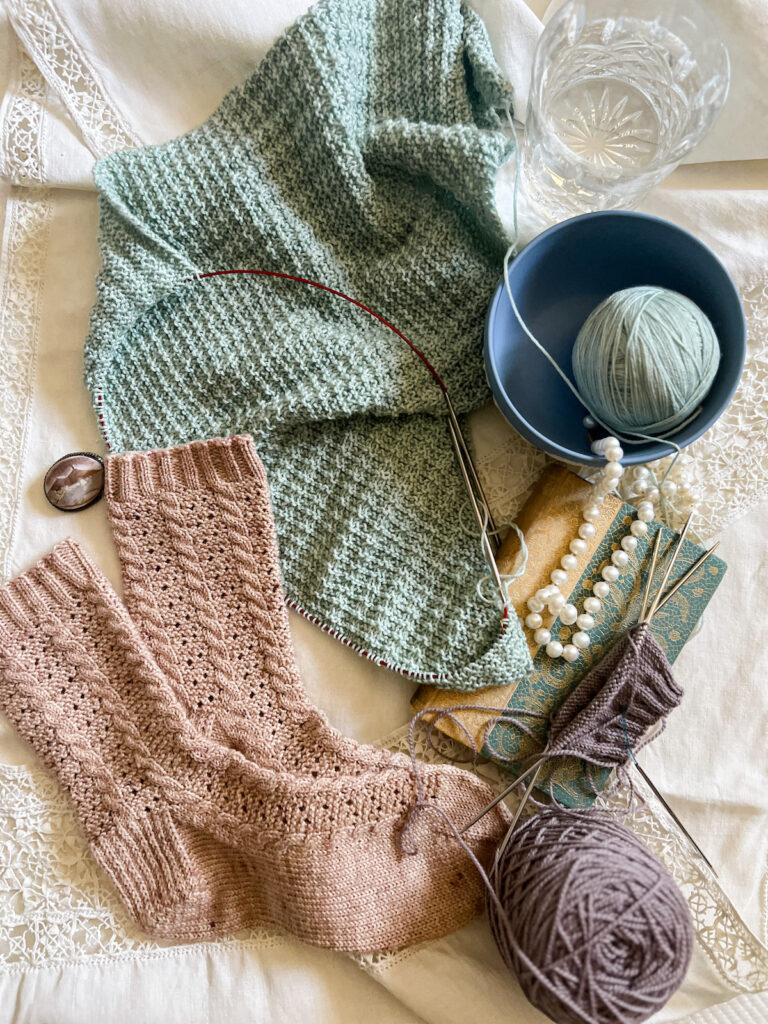
Myth Number One: Knitting Something is Cheaper Than Buying It at The Store
Have you ever heard someone say something along the lines of, “Well, I’m sure you can just make it for cheaper?” Yeah, me too, and it’s a load of nonsense.
I covered this in some detail over on TikTok not long ago.
@abeeinthebonnet One thing I love about seeing all of the newer knitters here on TikTok and elsewhere is knowing how many people are gaining an appreciation of just how much work goes into hand knit clothing and accessories. Being able to buy inexpensive clothes quickly and easily at large stores has cut a lot of us off from the process of making those clothes. We don’t realize how much goes into it. But every time another person picks up their needles and yarn, gives it a try, and realizes that it’s a slow process infused with lots of love (and maybe a couple strands of your own hair here and there), we are all better off for it. P. S. – I don’t sell my finished knits. Almost everything you see me working on here is a sample for one of my own designs, so I keep those for future reference. #knitting #knittersoftiktok #knittok #knitknitknit #knittersbelike #knittingislife #knittingproject ♬ The Universe – Yellow Shadow
The long and short of it is this: yarn is more expensive than ever, and even using budget yarn, you’ll run a good $12 USD to make a pair of socks (affiliate link – if you choose to buy something through this link, I’ll receive a small commission at no extra cost to you) for the average adult. If the yarn is hand dyed, you’re looking at more like $30 USD for a pair.
And that’s not even getting anywhere near how much it costs to knit a sweater.
Fast fashion has convinced so many people that clothing should be cheap, abundant, and disposable. There are all sorts of reasons to side-eye this development, but among them is the fact that it has also contributed to the devaluation of handmade clothing, including handknits.
The math just doesn’t support this myth. It’s usually not cheaper to knit something than it is to buy that thing.
Myth Number Two: All Knitters are Nice
Veterans of the online knitting scene are probably already guffawing at this one. People seem to assume that knitters are all nice people because our hobby is relatively quiet and unobtrusive, or because it’s most popular among women, or because it’s considered an old-fashioned hobby, or for any other number of reasons that don’t quite line up.
But the truth is much more interesting and more realistic, too.
Knitters are humans, and there are a lot of us. Millions upon millions. Ravelry alone boasts over 9 million users (and that number is from a few years ago).
In any group of that size, there’s going to be a wide range of people–different personalities, different priorities, different values. Many knitters are, in fact, truly wonderful people! But I’ve also encountered some extraordinarily unpleasant personalities in the yarn world.
This myth flattens and reduces the beautiful variety of the knitting world into a tired stereotype. There’s just as much variation in our ranks as in any other large group.
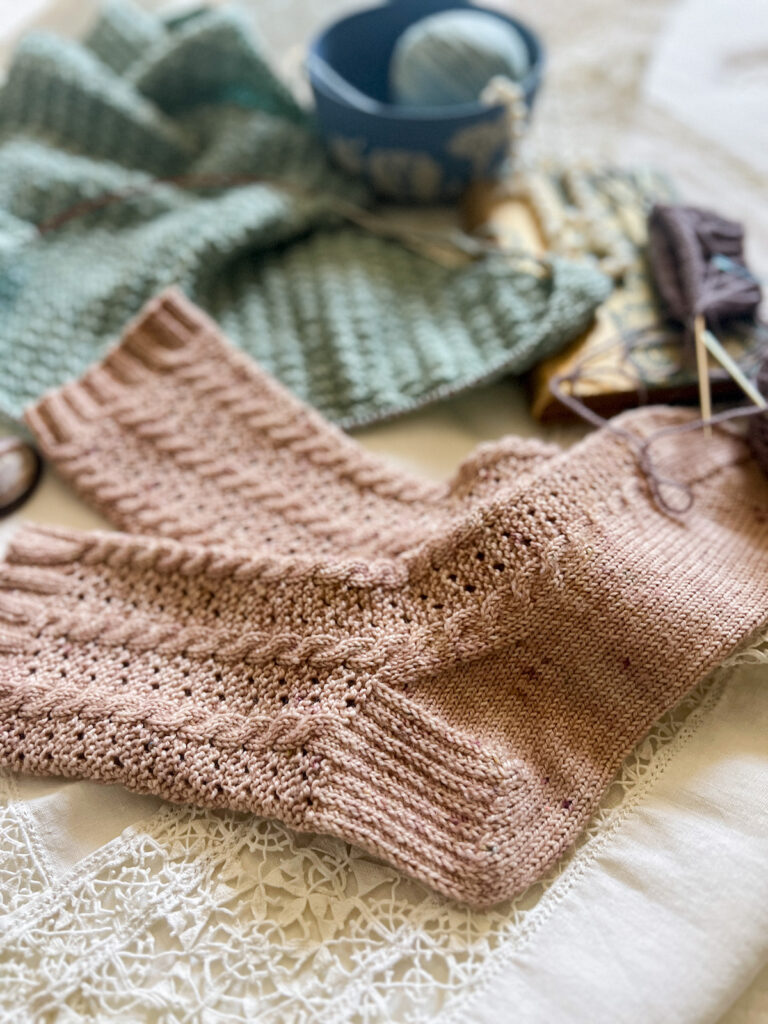
Myth Number Three: Knitting Is a Relaxing Hobby
This one isn’t a complete myth, but it isn’t a complete truth, either. Knitting does often relax me, until the times when it doesn’t.
On the one hand, knitting projects can be deeply soothing, with simple stitches and straightforward construction. There are some projects I don’t have to think about at all. I can work on those projects in the dark and while watching tv and while talking to other people.
But there are other projects, like the vest I’m working on (pictured in this blog post), that are not so relaxing. This vest is knit from the bottom up with a tubular cast on, mixes both bobbles and old shale, uses waist shaping, and then also needs some shaping around the shoulders and neck. I have to think about it every step of the way.
In other words, you can choose how challenging you want your knitting to be, and sometimes, the choice is something that really stretches you.
Let’s not even mention all the times when we have to rip out our work and start over, yeah?
Myth Number Four: All Knitters Are Grandmas
This myth ties in to the myth that all knitters are nice. I took up knitting in my early 20s, and I’ve lost count of how many times in the intervening years someone has joked about me being a grandma. Heck, I’ve even cracked those jokes a couple times.
But there are knitters of all ages, genders, races, and backgrounds. Some of us come from long lines of knitters in our families, while some of us are the only knitters we know.
A companion to this myth is the way so many people sneer at grandmas, as if being a grandmother were a bad or sad or embarrassing thing. I know a lot of wonderful grandmothers who have adventurous spirits and lots of wisdom to share. I hope to be as cool as they are someday.
This myth is why those “not your grandma’s knitting” headlines make me grind my teeth. It’s both always been grandma’s knitting and never been grandma’s knitting. Knitters have always been a range of ages, and the contributions of the grandmothers are valuable, too.
Myth Number Five: Knitting Is A Hobby That’s Only For People With Lots Of Time On Their Hands
Sometimes people see me knitting and say, “Oh, I wish I had the time to do that. It looks so fun.”
Friend. Please. I took up knitting in my first semester of law school. I knit through the bar exam, almost 8 years of practice, my daughter’s infant and toddler years, straight on through to today.
I didn’t knit because I had tons of time. I knit because I had no time, and I was stressed to high heavens about it. If I didn’t have the knitting in my hands, the stress and anxiety would have led to me picking at my nails, shredding pieces of paper, damaging table tops, and more.
There are some knitters who do have lots of time and use that time to perfect their art. There are other knitters who use the knitting as a way to find comfort when they have no time whatsoever. For more on that, see my post about some of the places I’ve knit on the go.
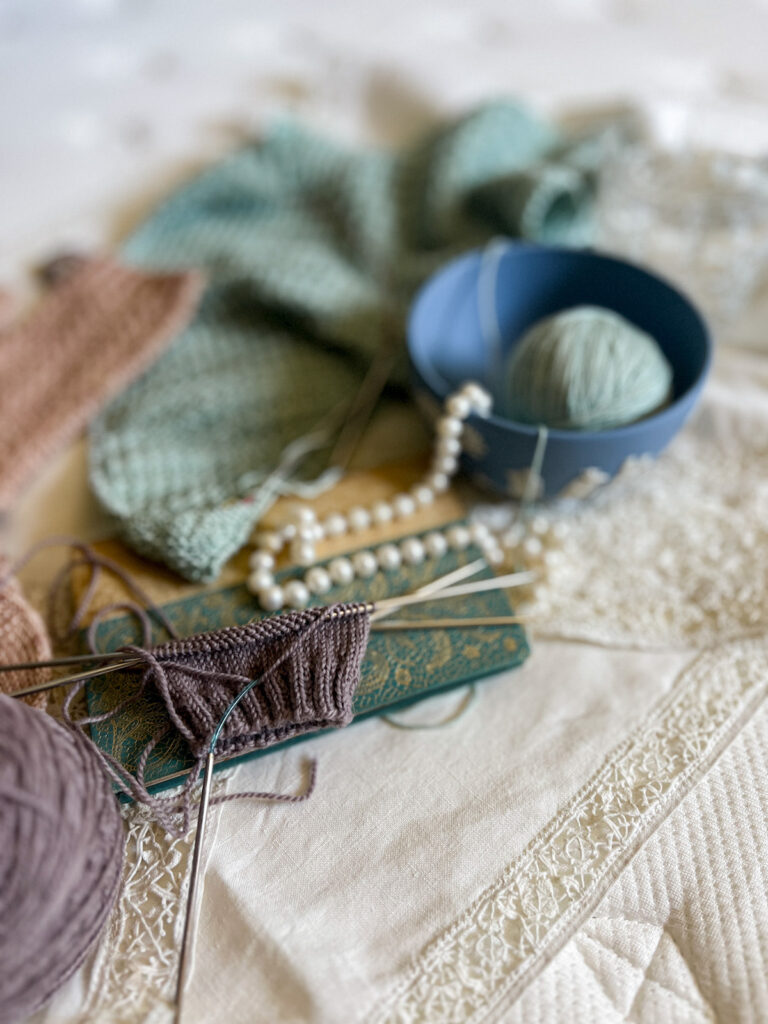
Myth Number Six: Knitting Is A Dead Art
A lot of people believe that, with the advent of machine-made knits and fast fashion, hand knitting has more or less gone extinct. The truth couldn’t be more different.
Although it’s true there are probably fewer knitters now than there were in the days when it was a necessity, there are still thriving communities of knitters all around the globe. Whether you’re interested in knitting lace shawls, colorwork sweaters, or cabled socks, there’s a group of knitters out there doing the same thing who have lots of advice and encouragement for you.
In fact, knitters are deeply committed to keeping their craft alive and passing it on. Many of us have had the honor of teaching somebody else to knit, and still more actively work every day to share the joy they find in craft.
Knitting isn’t dead. Not even close.
Myth Number Seven: There Is One Right Way To Do Things When You’re Knitting
One of the most common misconceptions about knitting is that a knitter needs to do everything “the right way.” While there are some limited situations where there really is only one day to do thing, for most of what we do as knitters, there are lots of ways to achieve the same result. Some of those methods might be easier or faster or have other additional benefits that lead to many knitters preferring them, but that doesn’t mean they’re the only way to achieve the desired outcome.
Take, for example, the question of how to block a shawl. Some knitters like to soak it, lay it flat to dry, move the edges into the desired size and shape, and go. Others use T-pins, and still others prefer blocking wires. A few really dedicated knitters have even built entire blocking frames for their shawls.
A well blocked shawl is the desired outcome here, but there are several different ways to get there. Different people will find each of those methods more or less appealing based on their personal circumstances.
The same is true of so much in knitting. There are different ways to make a bobble, different ways to make a sock heel, and different ways to bind off a sweater hem. They all have their benefits and drawbacks.
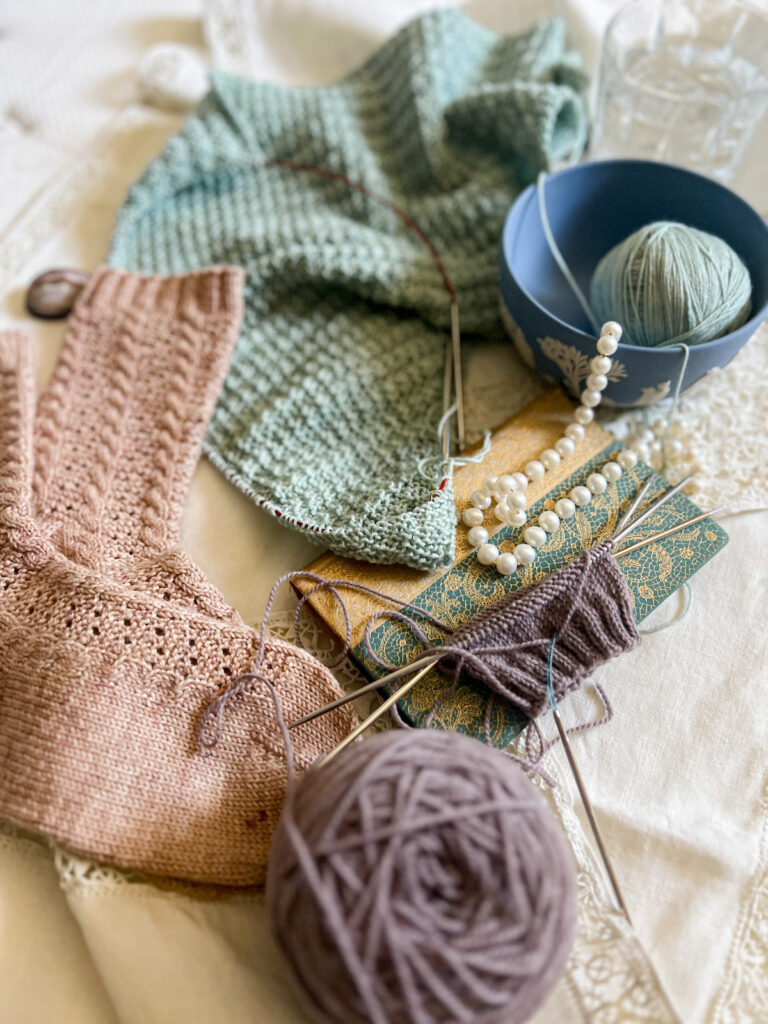
Myth Number Eight: Knitting Is Better Than Crochet
This is the one myth that I truly despise above all others. Somebody, somewhere along the way came to the conclusion that knitting is more skillful, more elegant, and more interesting than crochet. It’s just bunk.
From the delicately intricate Irish lace crochet collars of the past to the dramatic modern shawls designed by my friend Britt, crochet spans a realm of skill and finesse that is just as significant as that of knitting.
Each of the fiber arts has its own strengths, and comparing them to each other is so inexact that there’s really no point. Instead, I think it makes more sense to value each of them for their contributions to the world and the joy they bring us as makers.
Let’s stay connected!
Join my newsletter for 30% off all new releases, regular updates with helpful tips and tricks, first crack at registration for upcoming workshops, exclusive discounts, and more.
Join the A Bee In The Bonnet Facebook Group to participate in knitalongs and other fun community events
Come hang out with me on the A Bee In The Bonnet TikTok
Follow along on the A Bee In The Bonnet Instagram
Get inspired via the A Bee In The Bonnet Pinterest

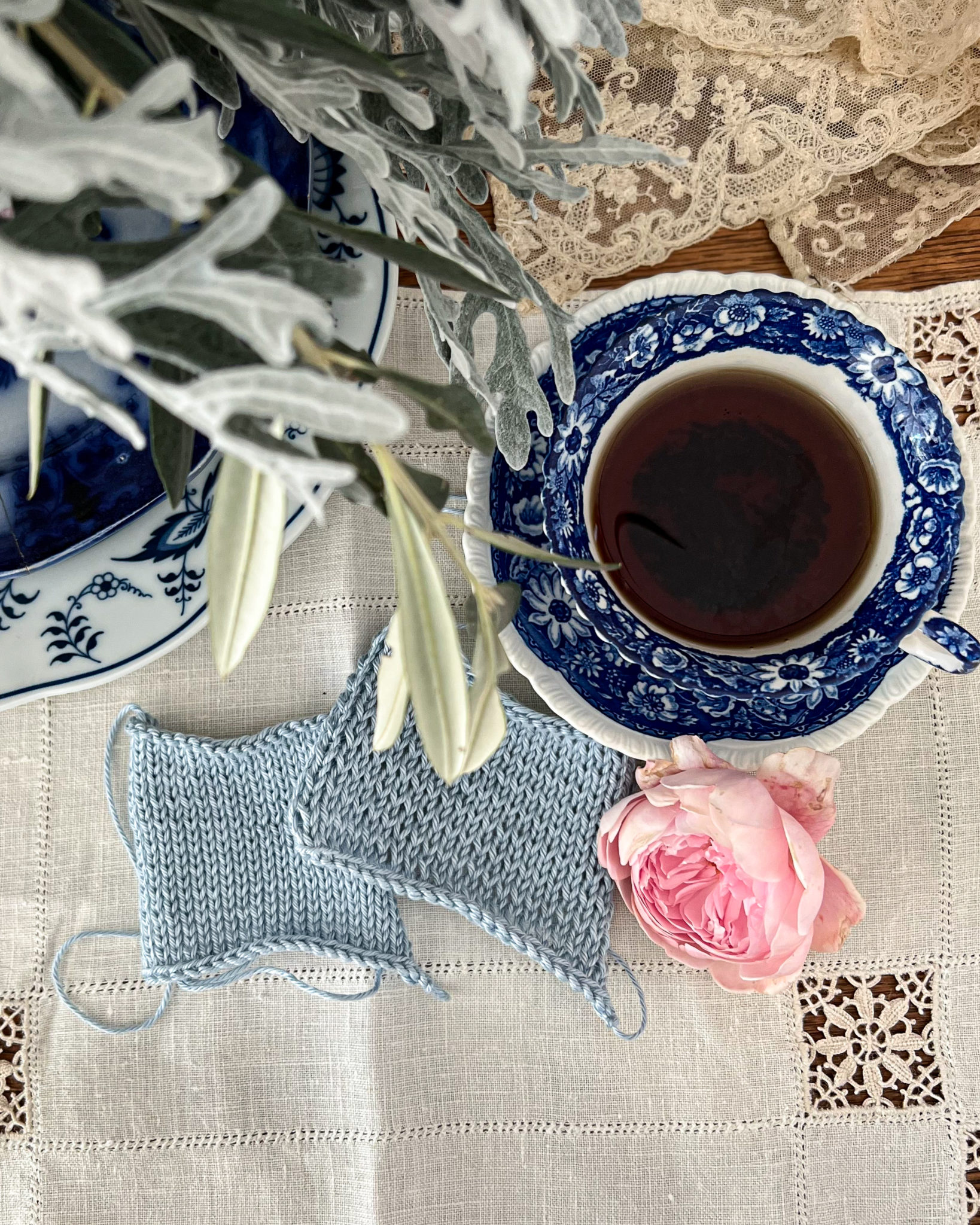
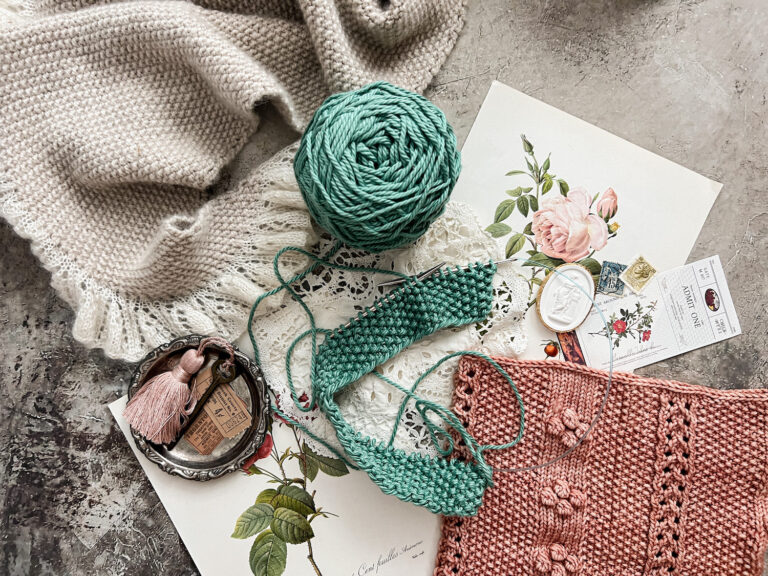
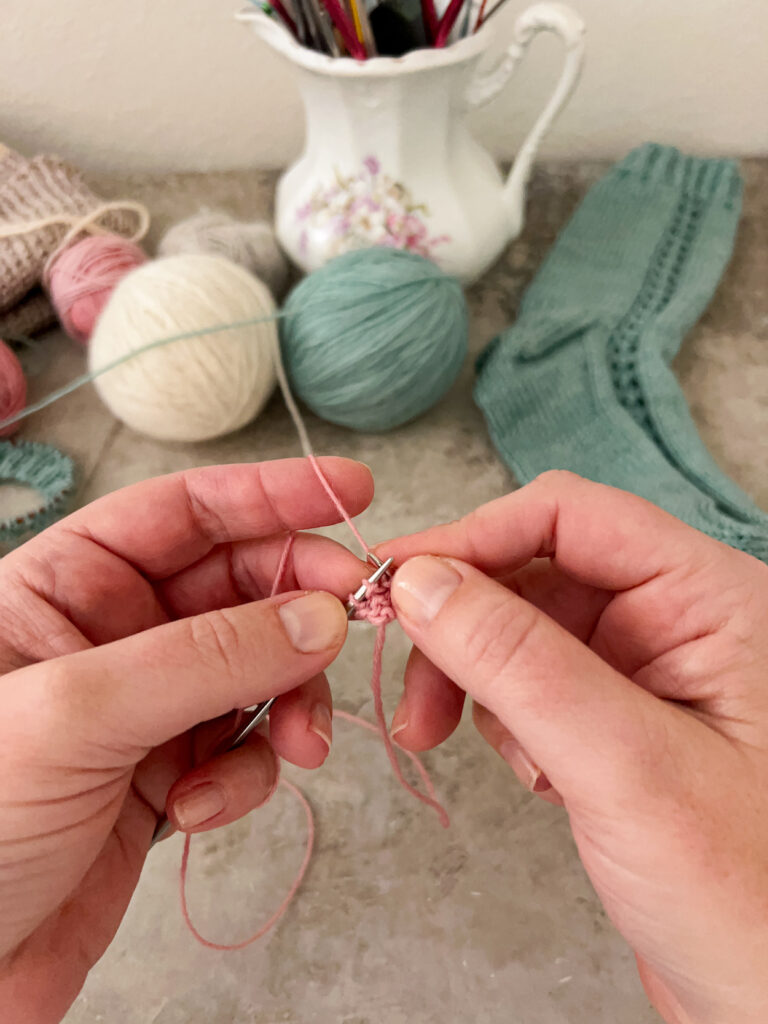
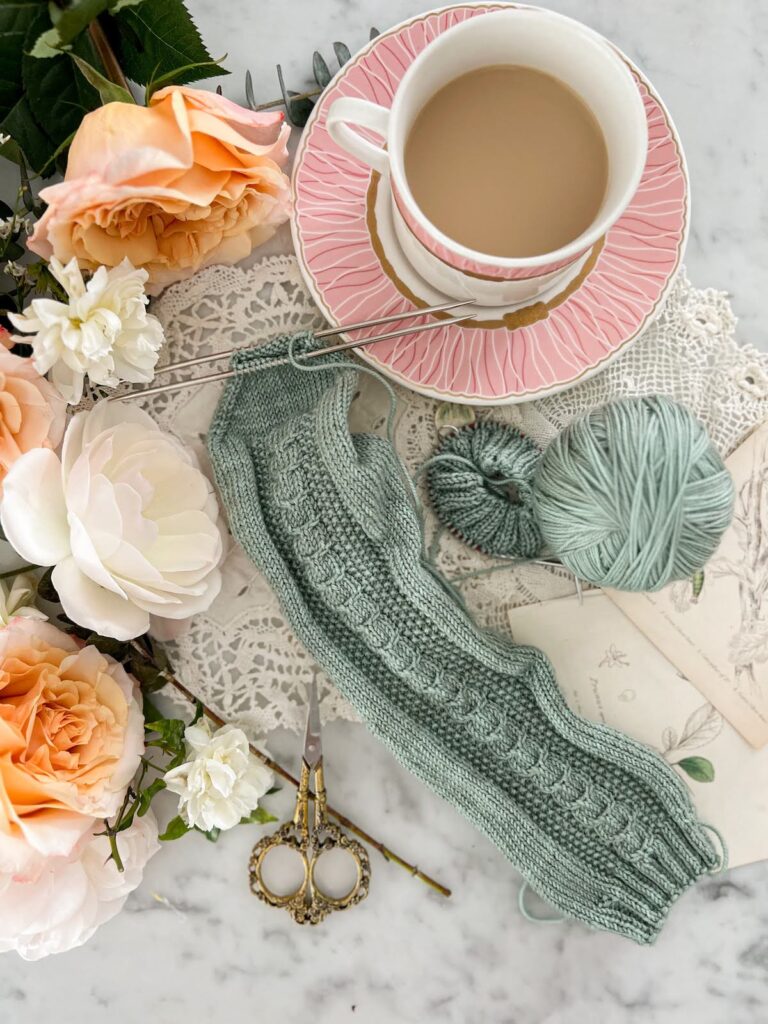
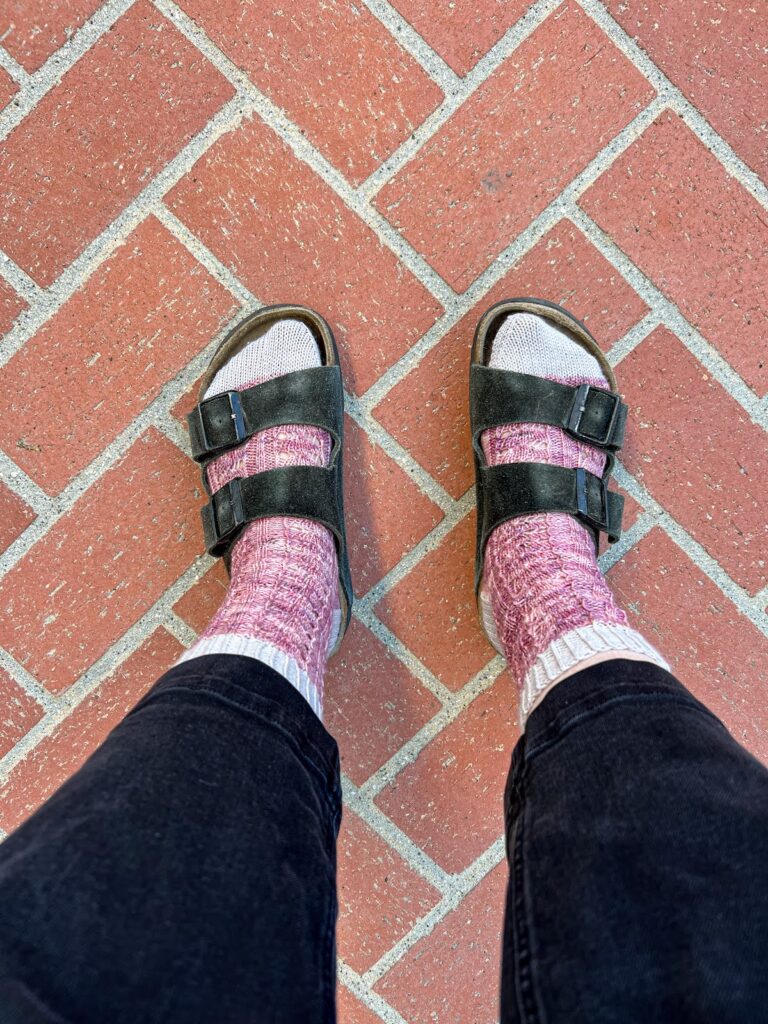
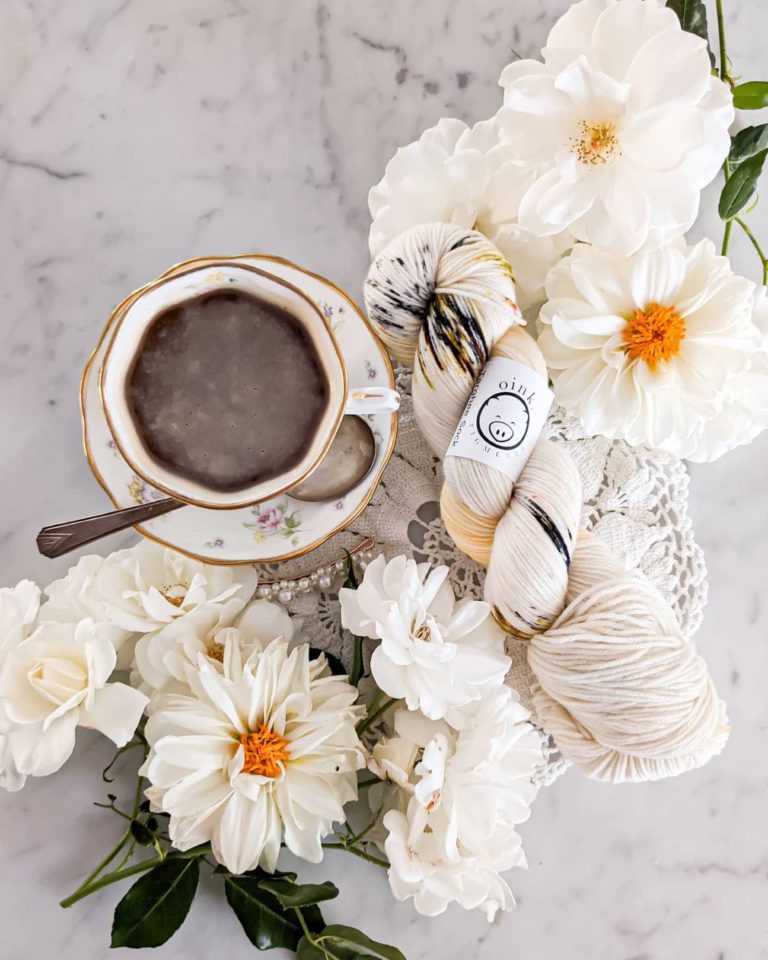
Time and time again I see some out right nastiness from knitters for no other reason than they can be.
True, as with humans generally. We’re just a cross section of the wider world!
Here’s a myth that bugs me: the idea that knitting needles CLICK. It is such a hackneyed phrase in stories — “she sat in the rocking chair her needles clicking away” — lazy writing just like, as you mentioned, the “not your grandma’s knitting” phrase used again and again as a headline. Knitting and crocheting are both soundless, activities. If a writer actually observed a knitter or a crocheter in a rocking chair they’d see the need to write about the visual, the movement and rhythm, there is no sound.
I think this one depends in part on the knitting technique a knitter uses. When I use metal DPNs, they definitely click against each other, but not so much when I’m using 9″ circs for socks.